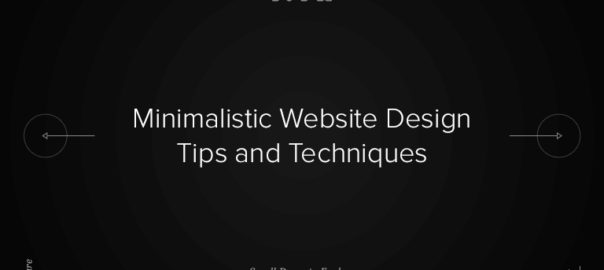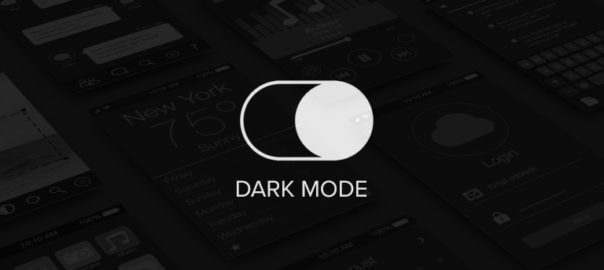When someone says “less is more,” they are pointing towards the concept of minimalism. Minimalistic website design ideas are more than a design feature. It’s a way of thinking and an approach towards creating design elements or communication interfaces that emphasize on keeping the creatives restrained and nominal.
Minimalism is attractive and compelling and is being approved by most of the designing professionals and users these days.
Why is it so effective? Look at it this way: If you want to go to the summit of a mountain, you need to be as lightweight as possible. With only you and your essential equipment, you’ll have plenty of room and a great view of the world at the very top. Minimalism lets you get the most out of your trip by using the fewest resources possible.
That is the essence of minimalism.
Similarly, in the context of web designing, minimalism is all about providing seamless user engagements without the addition of unnecessary design components. With a focus on simplicity, you may create a website that appears polished and well-thought-out, as well as one that can accomplish more with less. Lower levels of distraction lead to higher levels of attention, involvement, and eventual conversions.
When it comes to your website, you don’t have to limit yourself to just one facet of minimalism. It’s all about making the most of what you’ve got. This blog discusses all aspects of minimalistic website designing employed by web design professionals and will guide you to implement one.
Best Practices for Minimalistic Website Design
1. Utilize the whitespace
There will be some free space left after removing some unwanted objects. The white space is often referred to as the negative space by web design professionals. Besides that, it serves as the foundation for all minimalist designs. It’s not required that it’s white, but it is without a doubt empty. Even when it’s empty, it still has an impact on how buyers see your brand.
First and foremost, it eliminates annoyances and interruptions. Second, it draws attention to itself and makes it easier for users to get to the content they need without having to contend with distracting aspects. Whitespace has been linked to a number of advantages, including the ones listed below.
- It improves the user’s experience and directs their attention to the website’s content and your offering.
- It provides a sense of equilibrium.
- A web design company may use it to entice visitors to stay on your website longer by paying attention to the information that appears in the white space between your site’s primary content sections.
One of the best ways to get a minimalist look is to use a lot of whitespaces.
2. Use of vivid colors
Even though bright colors might be exciting to look at, implementing them into a minimalist design can be difficult. Colorful backdrops grab the user’s attention and hold it for a long time. However, if the background is very colorful, it might go from being intriguing to being bothersome.
The usage of vivid colors should be paired with more subdued, relaxing hues. Include some typography in either black or white. If you follow these steps, you’ll end up with a stunning, eye-catching final result. Furthermore, inform the web design company you employed to avoid elaborate animations, strange typefaces, and abrupt transitions between content sections.
3. Experiment with typefaces
Beautiful, strong typefaces are a key design trend right now followed by many professional web design services. Your imagination is the only limit. Your user’s attention will be drawn to your content if the typeface is clear and easy to read.
To compensate for the restricted use of animations and pictures on your site, an effective typographic strategy may be used to make it aesthetically appealing. Using typefaces to establish hierarchy will help your site’s users better understand what information is most essential and how to get around your pages.
On smartphones, typefaces are projected in a way that affects the overall usefulness of your product. Using the “Sans Serif” font type for a minimalist website is one of the greatest options since it is crisp and clean to look at.
It’s important to keep the font size simple when there aren’t many things on the page. Using tiny fonts may be an excellent method to convey information without consuming a lot of space. However, you must take precautions because small writing can quickly go lost on a web page, creating an impression of clumsiness and distraction.
4. Flat textures
There are no gradients, shadows, highlights, or other graphic elements in these textures. Everything about the user interface in this scenario appears to be kept to a bare minimum and to the point. It’s important to keep in mind that a flat design isn’t the only way to get a minimalist personal website. Different types of flat and minimalist designs may be found. It’s not uncommon for them to co-occur, but be aware of the distinction.
Although it may include a stunning 3D animation in the middle, a simple website might still be considered minimalist. For the time being, some designers may find it simpler to minimize using flat structures. It is important to bear in mind the overall look and feel of your brand when selecting from various web design ideas.
5. Customize navigation
In order to achieve a minimalist aesthetic, it is essential to get rid of whatever you consider unnecessary. Some web designers, on the other hand, may take things a step further by eliminating the majority of the website’s navigational elements. Make sure that you don’t obscure navigational links that are critical to your users.
It’s best to leave the “menu” button intact while integrating the rest of the navigational buttons into the “menu.” The “homepage” button can be hidden within the logo of your firm. Moreover, you should highlight the buttons in such a way that your visitors understand they are clickable.
6. Grid layouts
Digital designers that want a minimalist aesthetic use grid layouts in particular. An additional benefit of this design is that it makes the page appear lighter. Even with a steady stream of fresh content, there is never a feeling of being overloaded.
You may also use grids to build a responsive version of your website, which normally requires an image that is drastically different from the desktop version.
7. Images should be carefully chosen
People’s emotions are greatly influenced by visually appealing graphics. That’s why an entire business has been devoted to designing.
Use high-definition images that are vivid and eye-catching to elicit a strong emotional response from your visitors. While photographs can be used as ornamentation, remember that they should also demonstrate the business or product you are delivering.
Bottom Line
For your minimalistic website design to be a success, you’ll need a clear vision, an inquisitive mind, and the willingness to go from cluttered to no-cluttered. But the payoff is worth it. Minimalism reduces your brand to its most basic elements, making it easier for potential consumers to meet and interact with you.
Contact Us today to get your website audited for UI and UX
Read About How To Use Colors In your Websites here.



